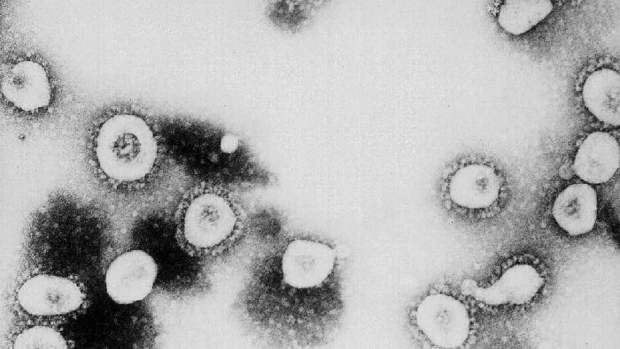Apr 18, 2024
It’s Taken 100 Scientists Two Years to Rename Airborne Viruses After Covid Mistakes
, Bloomberg News

(Bloomberg) -- Airborne viruses will be called “pathogens that transmit through the air” under new terminology the World Health Organization hopes will end a scientific rift that hampered the early response to Covid-19.
After two years of consultations involving over 100 scientists, a WHO-led working group agreed to the term to describe diseases caused by infectious particles that typically multiply in the respiratory tract and spread from the nose and throat of an infected person while they breathe, speak, sing, cough or sneeze.
Yet the announcement was rejected by prominent scientists, including UC San Diego’s Kimberly Prather and Oxford University’s Trish Greenhalgh, who criticized the agency’s continued avoidance of the term “airborne”.
While the discussion may seem trivial, it carries important economic and public health consequences. How pathogens transmit determines what control measures are most effective at preventing their spread. As Covid erupted in early 2020, the WHO maintained for months that the fast-spreading virus wasn’t airborne — delaying recommendations for mask-wearing and indoor ventilation, and frustrating aerosol scientists who believe the misguided advice cost lives.
“Science changes,” Jeremy Farrar, who took over as chief scientist at the Geneva-based agency about a year ago, said in an interview. “All you can do honorably is to share what you think is the best available evidence at that time.”
Read More: A New Year’s Feast Spread the Virus and Now Divides Scientists
Government Response
Evidence gathered in the ensuing four years has prompted worldwide government action to mitigate airborne diseases. The US Centers for Disease Control and Prevention last month detailed steps that people can take to reduce the number of respiratory particles circulating indoors, a year after the White House set a “clean air in buildings” challenge. The WHO itself released in March an 83-page manual that can be used to assess the risk of airborne Covid spread.
Some researchers have also proposed mandating indoor air quality standards for public buildings. Still, tackling airborne infections remains controversial. The lengthy consultation process around the WHO’s new terminology was “extremely complex and sensitive,” according to the working group’s report, released Thursday.
The report reaches consensus on the term “infectious respiratory particles,” moves away from a strict dichotomy of particle sizes, and accepts that smaller infectious respiratory particles can be transmitted at both short and longer ranges.
Their potential consequences, however, were a sticking point for some of the report’s authors. Infections capable of spreading long distances through the air on tiny respiratory particles may call for rigorous and expensive infection control measures, such as the wearing of particulate-filtering respirator masks and specialized hospital rooms in health-care settings.
Global Consequences
“This would have legal, logistic, operational and financial consequences that have global implications with regards to equity and access,” the report added.
Short-range airborne transmission means health-care workers will need respirator masks when interacting with certain patients, said Joe Vipond, an emergency physician in Calgary, Canada, in a series of posts on X.
Read More: Covid Is Airborne, Scientists Say. Now Authorities Think So, Too
The terminology sets common language that engineers, physicists, clinicians, and epidemiologists will be able to apply in determining the broad implications of airborne particles, along with the effectiveness of countermeasures like face masks and respirators, Farrar said.
“In the first hours, days, and weeks of a new respiratory pandemic, it’s issues like, ‘do masks work?’ And, if masks do work, ‘what type of mask,’ which will have enormous impact on the ability to protect communities and health-care workers,” he said.
Old Teachings
In March 2020, the WHO issued guidance for health workers caring for Covid patients asserting that the virus spread primarily through direct contact and respiratory “droplets” measuring 5-10 micrometers in diameter. The determination — based on decades-old infection-control teachings — meant that face masks were deemed an acceptable option during respirator shortages, unless the patient was undergoing a medical procedure likely to generate aerosols.
The WHO also recommended distancing of more than 1 meter — within which these droplets were thought to fall to the ground — along with hand-washing, surface cleaning and sneezing into elbows. With personal protective equipment in short supply, people were advised not to not wear masks unless they were sick or taking care of someone who was.
Read More: Should I Be Wearing an N95 Mask? The Evolving Advice
This advice has since been shown to be misguided. Transmission can occur over far longer distances, and the broad usage of masks among populations helped stem its spread.
Read More: Omicron’s Spread Across Hotel Hall Highlights Transmission Worry
The WHO’s new terminology acknowledges that infectious respiratory particles exist on a continuum spectrum of sizes, and recommends against applying definitive cut off points to distinguish smaller from larger particles.
‘Positive Step’
“That’s a positive step,” said physicist Lidia Morawska, a distinguished professor in the school of earth and atmospheric sciences at Australia’s Queensland University of Technology, who worked on the WHO report.
In early 2020, Morawska led an international group of 36 scientists which warned about airborne spread and called on the United Nations agency to change its guidance on Covid transmission.
Still, Greenhalgh, professor of primary care health sciences at the University of Oxford, said Thursday that “airborne” best describes respiratory pathogens that are transmitted through the air.
“WHO wants to introduce terms like ‘puff cloud,’” she said in a post on X. “This is a retrograde step. I for one won’t be playing ball.”
The WHO should have acknowledged airborne spread “much earlier, based on the available evidence,” the body’s former chief scientist Soumya Swaminathan told Science before leaving the post in late 2022.
(Adds comments from researchers and social media posts from second paragraph.)
©2024 Bloomberg L.P.





